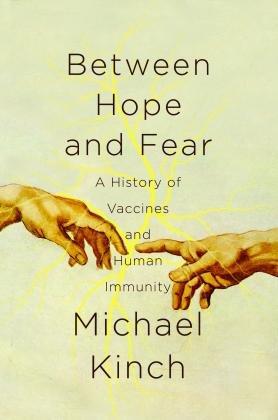Kinch, a research scientist, now at Washington University in St. Louis, who has worked on both immunology and cancer and has published a previous book on the crisis in drug development, recounts this history in scholarly detail. Although Edward Jenner is credited with the discovery of vaccination, for using cowpox to inoculate against smallpox, it was already known in his day that survivors of smallpox were immune to further episodes of the disease. The Chinese and the Ottomans had been using “variolation” for centuries, a procedure in which people were deliberately infected with material from smallpox scabs applied inside the nostrils or under the skin. Some of the inoculated patients died, but many fewer than would have had they contracted the disease the conventional way.

Kinch’s tale picks up speed and interest in the second half of the 19th century, when it was finally understood that infections were caused by microorganisms and not by foul vapors, known as “miasma.” As with so much biological science, it’s a complicated story, featuring dozens of scientists, many of them scrabbling for a place on — rather than gratefully ascending — a predecessor’s shoulders, and numerous discoveries that were the result of sheer luck. Robert Koch and Paul Ehrlich in Germany, and Louis Pasteur in France, dominated the early years of microbiology, but their professional relations were often riven by competition and conflict. Koch was famously insulted at a conference when an interpreter mistranslated Pasteur’s phrase “recueil allemand” (a collection of German writing) as “orgueil allemand” (German arrogance). And Pasteur deliberately suppressed — and ordered his colleagues to follow suit — the fact that he had committed fraud during a public demonstration of his anthrax vaccine. (He used a chemical method to attenuate the virus but claimed he had not.) Pasteur succeeded in developing a rabies vaccine, but much of his work was derivative, taken wholesale from the veterinarian Pierre Galtier, whom he failed to credit and who slipped into oblivion.
A similar fate befell other pioneers in the field, such as the Jewish-Ukrainian scientist Waldemar Haffkine, who, working in the British Raj, developed toxoid vaccines for both bubonic plague and cholera. (A toxoid is a weakened version of toxins produced by bacteria, as opposed to a weakened form of the bacterium itself.) When 19 patients in the Punjab died of tetanus contracted from a contaminated bottle of plague vaccine, Haffkine was unjustly held responsible. Although he was eventually shown to be innocent, his treatment — he was effectively exiled from his profession — was compared to that of Alfred Dreyfus.
Kinch has done these early scientists a great service by recounting their contributions. There are some fascinating episodes about the discovery and use of bacteriophages (viruses that attack bacteria) and the way in which they might become important again as antibiotic resistance is increasingly a problem.
The final, and most important, chapters of the book deal with the contemporary anti-vaccination movement and its possibly lethal consequences, including several passages on the British doctor Andrew Wakefield, who falsely claimed that the MMR (measles, mumps and rubella) vaccine was responsible for autism. Kinch shows that public anxiety about vaccines is nearly as old as vaccines themselves. In the 1970s, there was widespread doubt in Britain over the safety of the DTP vaccine for diphtheria, tetanus and pertussis (whooping cough). One prominent opponent, Dr. Gordon Stewart, went on to maintain that AIDS was caused not by H.I.V. but by homosexual behavior. His view had a major influence on the South African president Thabo Mbeki, whose AIDS policies were subsequently estimated in a report by the Harvard School of Public Health to have resulted in 365,000 avoidable deaths.

